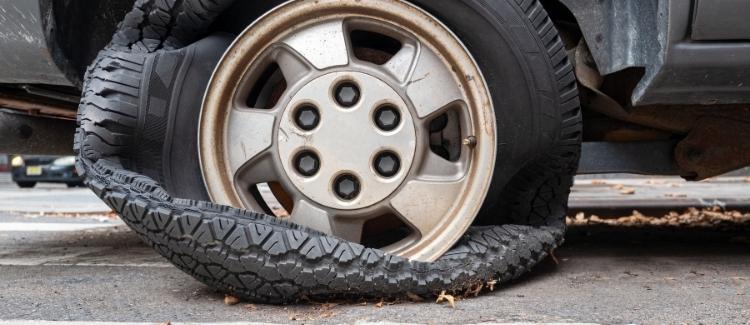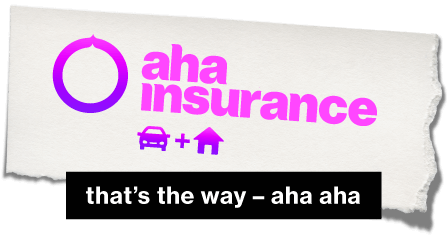Imagine this beautiful scene: You’re sitting back comfortably in your car, at the wheel. You are cruising down the highway, the gentle breeze caressing your face through the half-open window. Then, all of a sudden there’s a bang—your car starts to swerve and reverberate. That’s a tire blowout, and it can be prevented!
Then, all of a sudden—BOOM! Your car swerves, a vicious hiss reverberates through the cabin and the car starts to slow down all by itself. Before getting a tire repair kit, read this guide to safely pull over.
There are a lot of reasons your tire can give up on you, but when it does, it is important to know what you should expect and what you should do, in order to handle the situation quickly and efficiently.
How to recognize a tire blowout
There are three distinct sounds to be on the look-out for, when it comes to a tire blowout:
Loud bang: you’ll hear this when the tire initially pops. We’d tell you not to panic, but it probably happened already if you’re reading this. Maintain your grip on the wheel and check your mirrors to make sure you have space.
Hissing or whooshing sounds: it’s not necessarily loud, but usually loud enough for you to distinguish from ambient noise. This is the sound of pressured air quickly escaping the blown tire.
Repeating flapping sounds: This is the sound that you’ll hear after the air comes out and the deflated tire starts hitting the road.
While this can easily make you panic, it’s important to do your best to stay calm and collected. Take a deep breath and remember this process the next time it happens.
Don’t make knee-jerk movements during a tire blowout
You might be tempted to slam on the brakes, or turn the wheel sharply in an attempt to regain control of your vehicle. However, during a tire blowout, these two things are the worst possible actions you can take. As one of your tires is now deflated, your car is no longer leveled and is slightly lower on one side.
This causes the entire car to lose its balance.
Keep calm and decelerate on
Make sure that you have a firm grip on the steering wheel. Use both hands and don’t let it turn on its own. You might feel that your car is wobbling and swerving slightly to the left, or the right, depending on which tire was blown. Do your best to keep the car straight as it starts to slow down.

Activate your hazard flashers to make other drivers aware of your current situation. Once you are below cruising speed (at about 30 kmph or so), you can consider it safe to pull the car over, on the side of the road.
If you determine it is safe to do so, you can leave the car to change your tire. It might be a good idea to set out some reflective cones, if you have them (not that we carry them in our own cars). Consider calling roadside assistance if you don’t think you would be able to change the tire by yourself or it isn’t safe to do so for any reason at your current location.
How to prevent a tire blowout
To minimize the chances of experiencing tire trouble out on the road, there are definitely some things you can do to help yourself in advance.
Be aware of the tire blowout season. This is typically May through September, where the temperature of the asphalt tends to be higher, because of the warmer season and extended exposure to sunlight. The friction between the heated road and the tire can degrade the rubber faster, so it’s important to take good care of your tires during this time.
Check tire pressure regularly
Remember that your tire is the main connection between your car and the road. The less air it has, the harder it has to work, until it eventually wears down entirely. Identifying the problem and re-filling your tires with air is crucial to prolonging their life cycle. Check your tire manufacturer’s specifications to find out how much air is considered optimal for your tire and do your best to maintain that level.
While not considered mandatory under Canada’s Motor Vehicle Safety Regulations, you could pay a little extra to have a tire pressure monitoring system installed in your vehicle. Most car dealerships offer this as an option. That way, as soon as the tire’s air levels are low, a light on your dashboard will turn on to let you know and you’ll be aware as soon as there is a problem.
This prevents damage to the sidewall of your tire. It’s usually associated with damage from running flat tires, but it’s worth noting just in case.
Inspect tires for debris
Inspect your tires from time to time. Just give them a closer look once every two weeks. You’d be surprised at the things you could find stuck against the wheels. It is not at all uncommon to pick up debris from the road as you drive. You might find pieces of wood, shards of glass or other foreign objects stuck on your tires. Remove these objects to prevent them from inflicting further damage to your tires.
Although car tires are built to withstand a lot, they still require some preventive maintenance to make sure you will always be safe while driving. Taking the few steps to make sure your car is well-maintained will reduce the risks of experiencing a tire blowout on the road.
Safe driving out there, folks!






